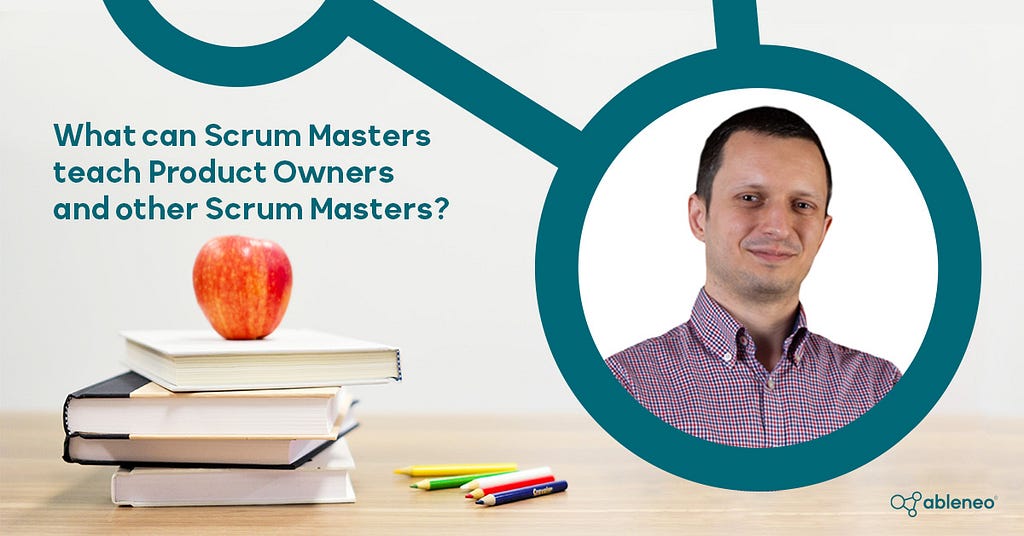What can Scrum Masters teach Product Owners and other Scrum Masters?

Hello agile practitioners! I hope you have a chance to observer how are Scrum Masters bringing lots of value when are active and engaged in their organizations. Let me share with you two ways how they may be useful to Product Owners and their fellow Scrum Masters too.

Scrum Masters helping Product Owners
There are couple of interesting tools and techniques that you — Scrum Master as an agile leader — might consider introduce your Product Owners to. Credits go to Zdeňek Macháček and his Agile Open Space 2018 talk (watch it here).
Impact Mapping — technique that helps to plan products (and projects) on a strategic level through visualization, collaboratively and in a context of the real world’s challenges. You first and best place to start is Impact Mapping webpage.
Story Mapping — process of arranging User Stories into a map, or rather in a grid of priority x complexity. If it sounds simple, it is. Yet the clarity that comes with it might be surprising — change from assumptions into a fact-driven decision making. Just starting? Check out images and even videos.
Lean Canvas — A simple way of looking at your product or service through lens of 9 specific, conjoining sections in a one-page. It was popularized by Alex Osterwalter’s book Business Model Generation and became an overnight success (after years of research and hard work, of course) in startup and entrepreneurship communities. Why not start with Lean Canvas with it’s creators?
Helping other Scrum Masters with patterns and anti-patterns
OK, you might have heard this one in your team — patterns. Should you felt left out of the conversation, fret not! Even Scrum Masters may utilize patterns in what they do and how they perform their activities.
Recently, I’ve heard a good example about a young, inexperienced Scrum Master, facing her/his first challenges. The obvious, maybe even default thing do might be to consult The Scrum Guide. Which is, in essence a process (or mother precisely, it’s interpretation), and goes against People over Processes. And here we are — living an anti-pattern.
As you may see, it might be hard to escape it as this might be the way you have been doing things in your career for a long time. What might help is to step back and take a good look and if you find a case similar to the example above, you know you’ve found an anti-pattern right there.
Interested to explore these ideas into depth? Or do you have suggestions for more? Let me know!
What can Scrum Masters teach Product Owners and other Scrum Masters? was originally published in ableneo People on Medium, where people are continuing the conversation by highlighting and responding to this story.
